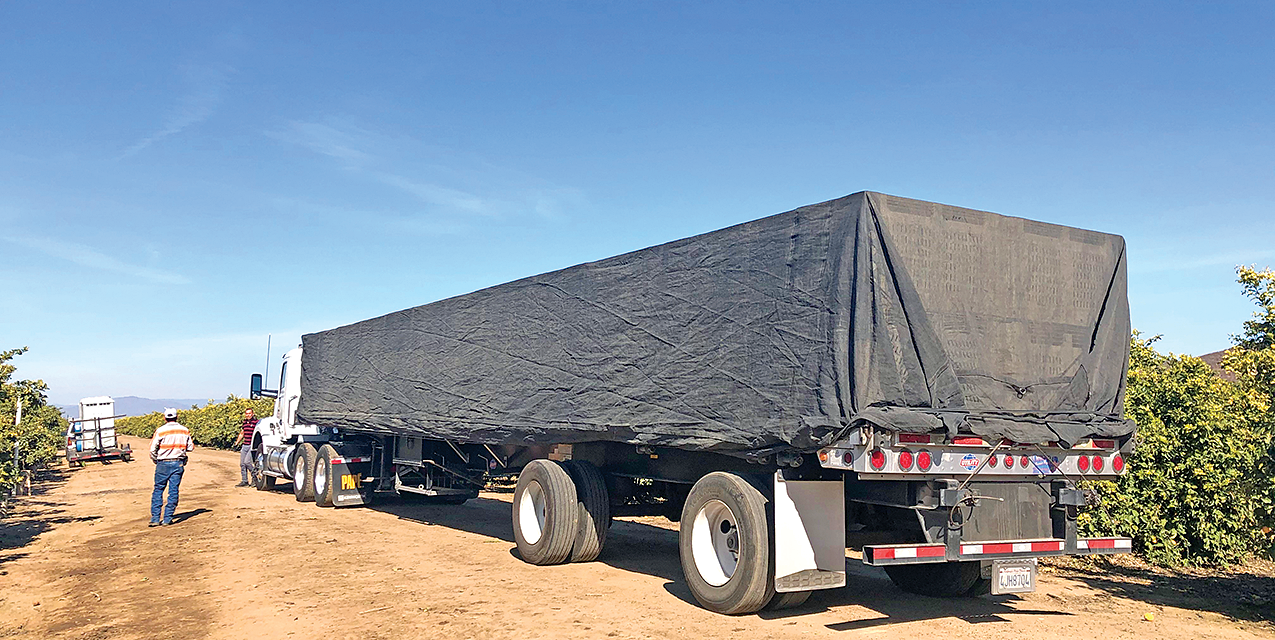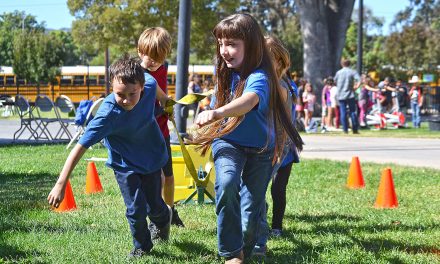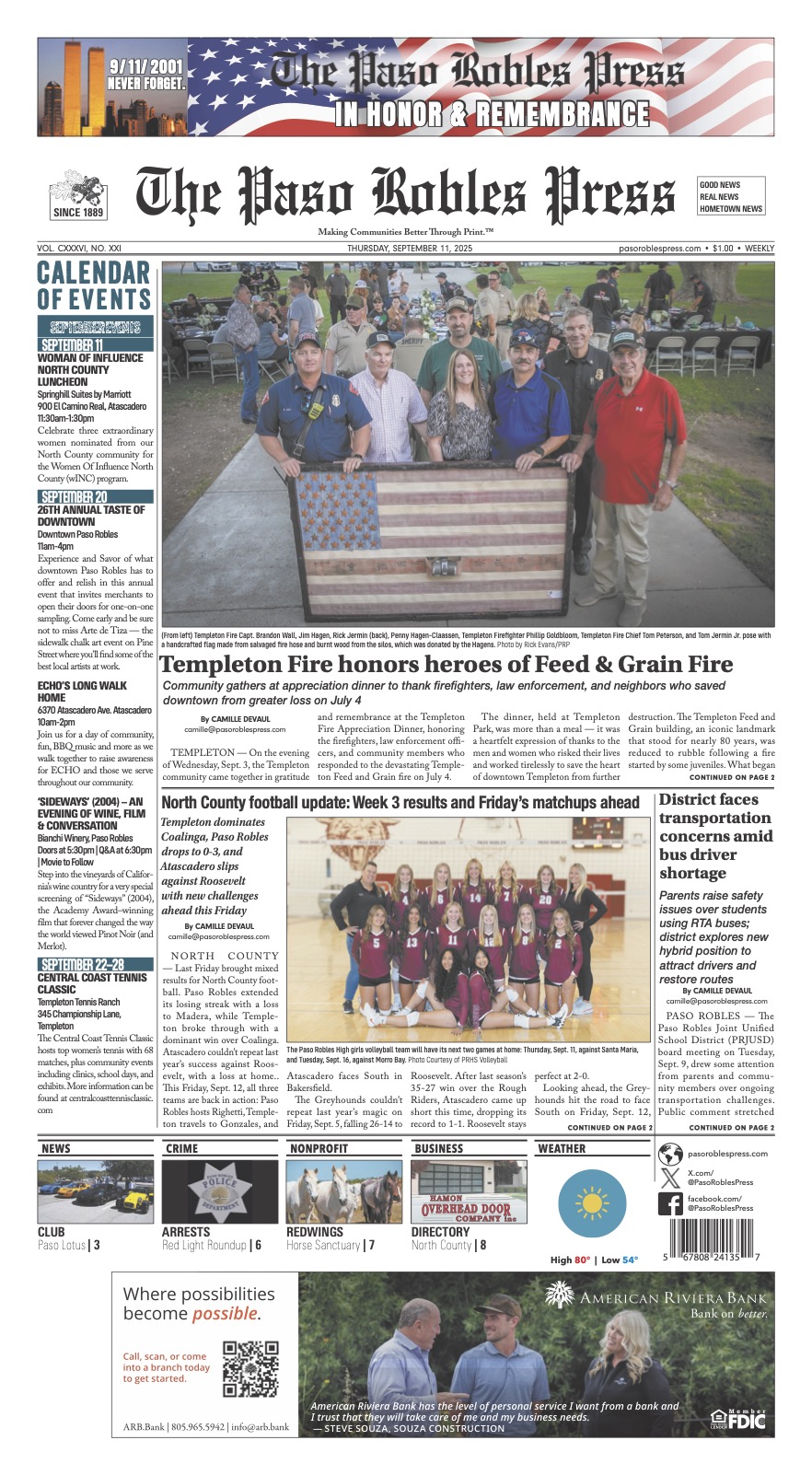By Lisa McEwen
California Farm Bureau Federation
CALIFORNIA — The gravest threat to America’s citrus industry — huanglongbing, also known as a citrus greening disease — arrived in Florida in 2005. Spread by the invasive Asian citrus psyllid, the crop plague has since devastated that state’s citrus production.
But in California, where the psyllid was first detected in 2008 and the first huanglongbing, or HLB, infection was found in a residential tree in 2012, no commercial citrus grove has been infected.
Officials credit an intensive psyllid detection and eradication program, industry-wide awareness and mitigation tools, as well as the Golden State’s climate, for warding off spread of the disease.
Still, Tulare County citrus farmer Jim Gorden looks with trepidation at what he calls the “psyllid pasture” of the Los Angeles Basin. More than 5,000 residential citrus trees have tested positive in the region, the majority in Orange County, with other detections in Los Angeles, Riverside, San Bernardino and San Diego counties.
“Once the psyllid is established in an urban landscape, there’s not much you can do,” Gorden said. “The urban landscape is our big risk. I tell people we must be truly arrogant if we think we can control this thing in such a vast and diverse landscape.”
Gorden, a pest management pioneer, is one of the original organizers of the Citrus Pest and Disease Prevention Program committee. Part of the California Department of Food and Agriculture, the CPDPP is tasked with protecting the state’s $7 billion citrus industry, which employs 22,000 people.
If the psyllid and the disease became established in California, it would wreak havoc on the nation’s leading supplier of fresh oranges, lemons and mandarins. Citrus crops cover nearly 292,000 acres from the desert, coast and the San Joaquin Valley, where the vast majority of California’s citrus is grown.
On March 23, after new residential tree infections in Riverside County in February, CDFA Secretary Karen Ross declared that the Asian citrus psyllid and citrus greening disease “pose a significant, clear and imminent threat” to agriculture and the environment.
In Florida, citrus production since 2005 has dropped 90 percent from 150 million boxes to an expected 16 million in 2023, according to a market brief from the American Farm Bureau Federation. The number of citrus growers plunged 62 percent and a fraction of juice processors remain in business.
“There is heightened awareness of the severity of what could happen,” said Casey Creamer, president of the trade association California Citrus Mutual. “The early predictions were dire, and we initially thought that HLB would be in commercial groves by now. But programs and procedures are in place to protect the industry.”
There is no cure for the disease. HLB causes small, misshapen, bitter fruit and is always lethal to the tree. The fruit retains the green color at the navel end of the orange when mature, which is the reason for the name citrus greening disease.
Gorden said controlling psyllid populations is key to controlling HLB. “It’s truly a gargantuan effort to try to control this insect and this disease that it carries,” he said. “But we’ve so far done a better job than anyone else has.”
Much of that prevention fight has focused on keeping psyllids from becoming established in the San Joaquin Valley. The effort is helped by the psyllid’s inability to survive the valley’s heat and the natural buffer that is the coastal range. Psyllids are unable to fly higher than 3,500 feet. To prevent them from hitching a ride during transport, growers tarp loads on the way to the packinghouse.
Nick Hill, a grower in Tulare and Fresno counties, said growers are the first line of defense. “We must keep growers mindful of this problem, especially here in the San Joaquin Valley,” he said. “If something does happen, we must mobilize quickly. It’s tough to pull out trees, that’s the ugly side of this thing. If we want to save the industry, we’ve got to stay on top of it.”
As a grower of mandarins, navels and lemons, Hill said he is careful to follow guidelines, such as cleaning equipment when moving from one field to the next and removing stem and leaf residue from bins.
“Growers must stay at the top of their game, and I know the costs that can bring on. It’s hard to swallow,” he said.
Florida’s misfortune is not an advantage for California growers because Florida’s crop is mainly for juice while much of California’s citrus fruit is sold as fresh.
“We can’t afford to grow for the juice market,” Creamer said, noting the higher production costs in the state. Because of its tropical climate, which happens to be a year-round breeding ground for the psyllid, Florida can’t grow anything else. “It’s not like California, where our growers can switch to another commodity,” he said.
But California researchers, growers and industry leaders are learning from Florida’s experiences, banding together to fund research into short and long-term solutions to HLB, including breeding disease-resistant citrus varieties.
In December, Congress approved $1 million to establish a citrus breeding program at the U.S. Department of Agriculture Agricultural Research Service field station in Parlier. The funding will be re-appropriated annually.
Additionally, the House Appropriations Committee provided an additional $1 million in federal funding for the Parlier program in June.
The program is an expansion of the existing USDA citrus breeding program in Florida. It will identify new varieties that are best suited for changing climatic pressures such as drought, consumer taste preferences, and resistance to pests and diseases such as HLB.
The Florida and California breeding programs, along with the efforts of the citrus breeding program at the University of California, Riverside, are working together on behalf of the industry.
The 2023 federal budget also included funding for the Citrus Health Response Program, which supplements industry and state funding for on-the-ground efforts aimed at preventing the spread of HLB, and continued funding for the Huanglongbing Multi-Agency Coordination group, which funds research programs aimed at identifying short-term solutions to HLB.
“Florida is our living laboratory for research,” said Victoria Hornbaker, who directs California’s citrus protection program. “We are all in agreement that resistant varieties are as close we can come to a solution. It is a way to buy time for scientists to find a cure.”
Kevin Ball is a grower in Ventura County, which is now under quarantine for psyllid presence.
He said growers are feeling the pinch of spray costs, as three area-wide treatments are encouraged annually that kill a variety of pests, including the psyllid. In addition to the 7 cents per carton assessment growers pay to help fund the CPDPP, growers also must absorb extra costs of covering fruit loads with tarps during transportation. If a psyllid is located in a nearby orchard, additional sprays are mandated.
“It’s expensive all the way around,” he said. “Last year and this year, citrus prices have not been very good, and it’s having an effect on a lot of growers.”
He said no psyllids have been found in the area since November.
“But they’ll be back. We’ll be ready for it and really take advantage of opportunities to knock them back in order to stay in business,” Ball Said. “Growers who want to stay in business see it’s in their own self-interest to do their part to keep the bug out of our groves. You don’t want to be ‘Patient Zero’ with HLB.”
Despite California’s success to date, Ball said growers can’t become complacent.
“We haven’t won anything yet,” he said. “We must keep HLB out of commercial groves long enough for us to have effective tools to eliminate the disease. We’re fighting for time until we get that magic bullet.”
Feature Image: A truck in a Tulare County citrus grove is tarped to prevent hitchhiking Asian citrus psyllids. Photo/Courtesy Citrus Pest and Disease Prevention Program














